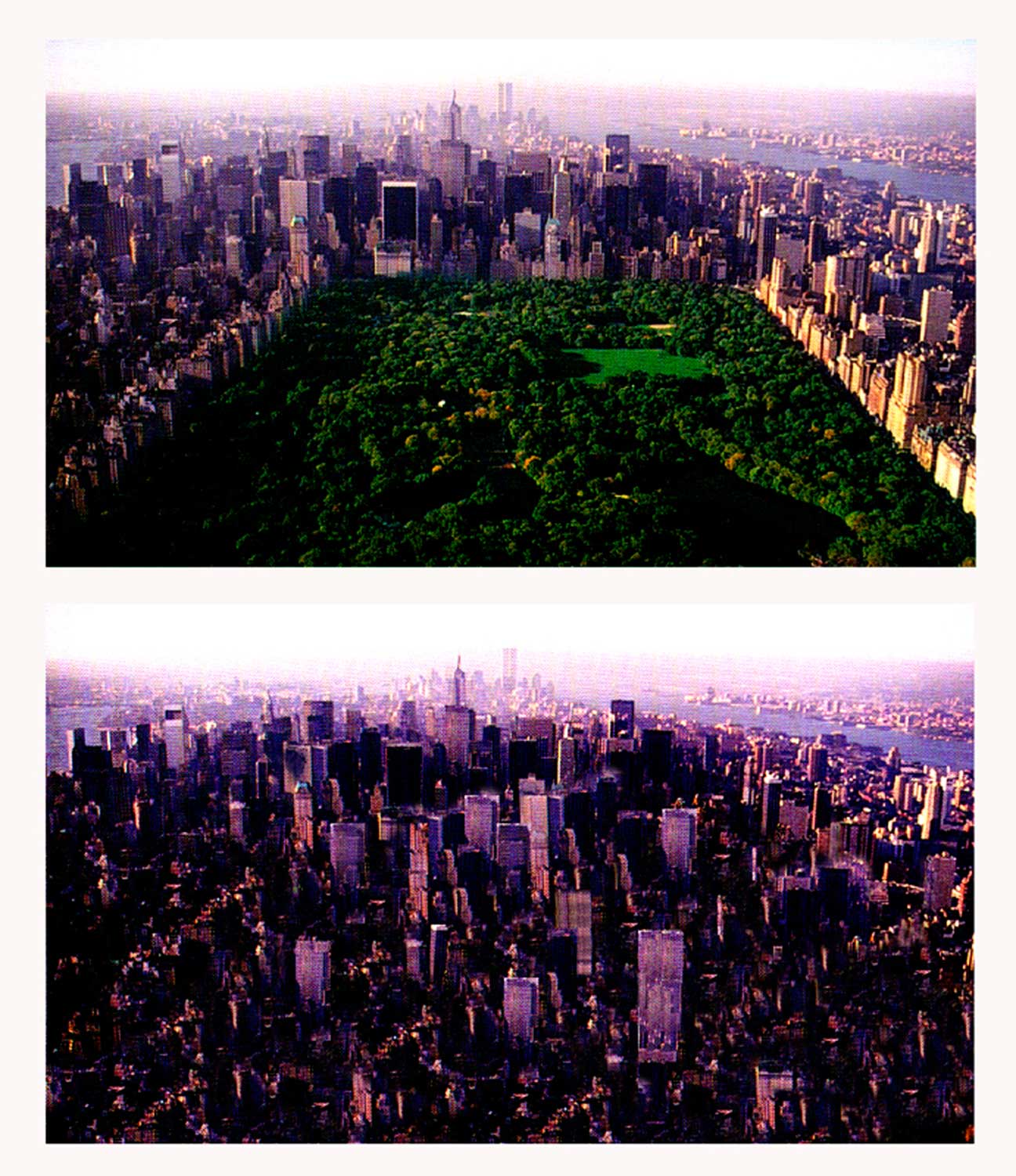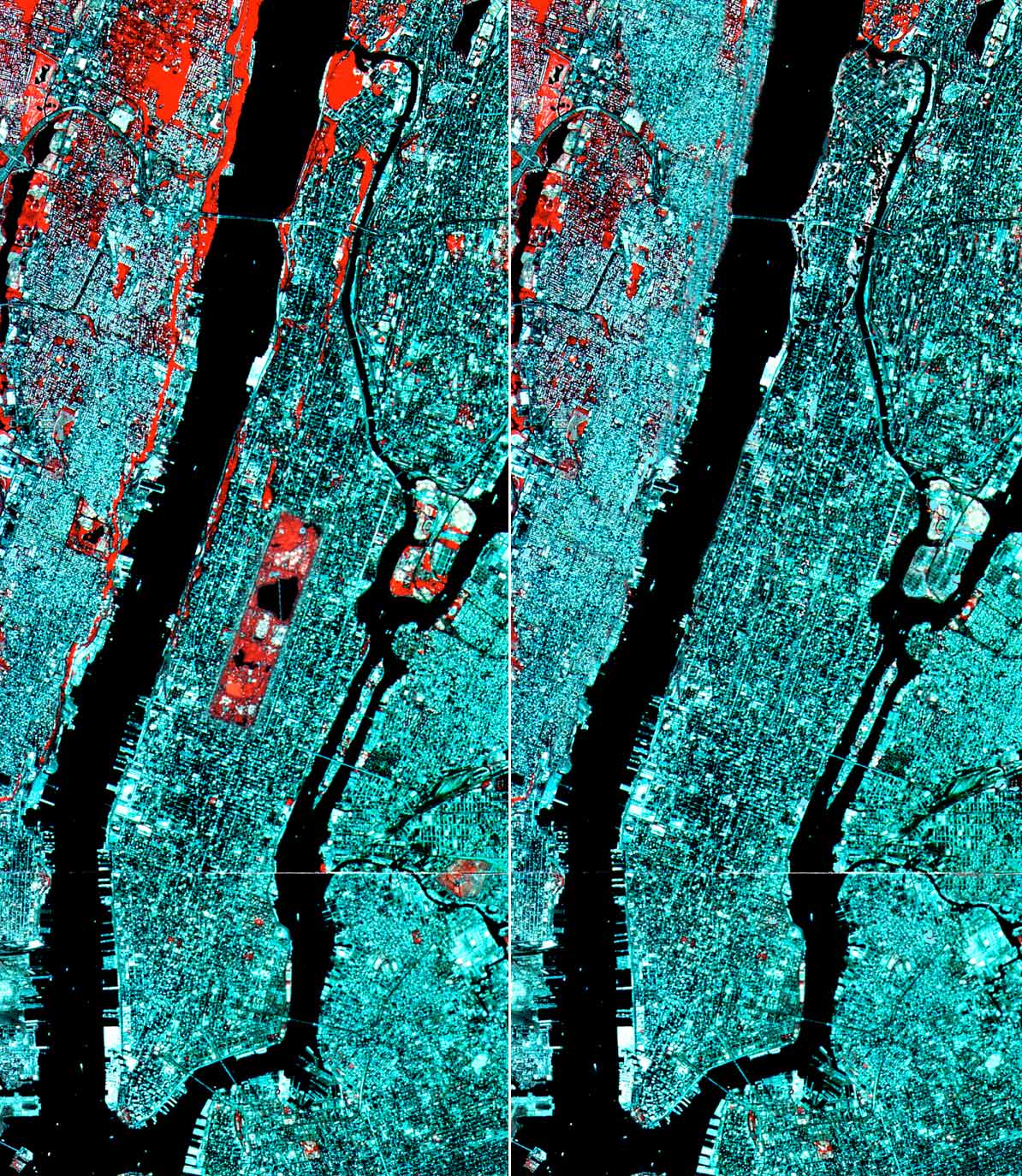Park / No Park
No Central Park
David Gissen
These images examine the ethics of space and nature in past and present New York City. One set of image shows present day New York City, which has significant features based on the ethics of nineteenth-century urbanism. The other set of images is a fictitious New York–based on the spatial ethics emerging at end of the twentieth century.
In the past, an ethical urbanism produced enormous parks, a grand esplanade, a civic beach. Today, city planners attempt to produce urban forms that incorporate the culturally and economically diverse perspectives of the city. As they do this, the creations of the past become more and more alien, especially in regards to the ethical perspective. Present-day historians and community planners have made us aware that thousands of urban poor are expelled to bring nature, and its attendant open spaces, into cities. Enormous bands of vibrant neighborhoods are demolished to create the public beach and the grand park. Even the position of bugs and animals is represented in the contentious space of contemporary urban planning.


The fictitious images illustrate the irony—because they look so cruel—in applying twenty-first-century ethical values to the fabric of present-day New York City. “Ethical” twenty-first-century planning should result in the restoration of Central and Prospect Park to their rightful settlers, and the return of housing and its displaced population. Within the city, everywhere there is space, everywhere there is nature, biology and growth, there is a zone of contention that has a problematic past. What these images do not show is the new zone, the new imaginary combination that will rectify the need for biological infrastructure with the need for acknowledgement and history.
Spotted an error? Email us at corrections at cabinetmagazine dot org.
If you’ve enjoyed the free articles that we offer on our site, please consider subscribing to our nonprofit magazine. You get twelve online issues and unlimited access to all our archives.